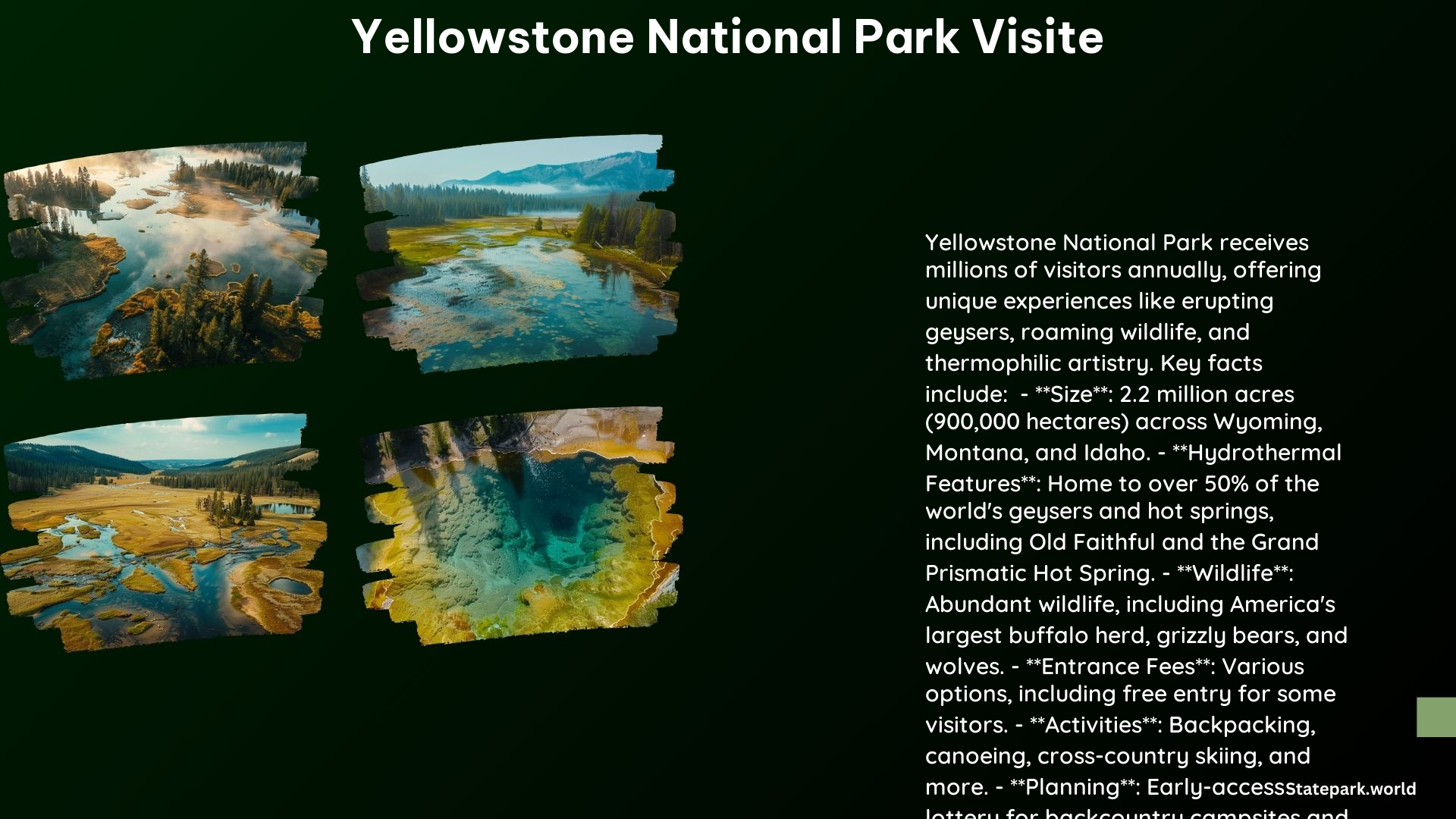Yellowstone National Park is a vast and diverse destination, spanning over 2.2 million acres across Wyoming, Montana, and Idaho. Whether you’re a nature enthusiast, wildlife lover, or simply seeking a breathtaking outdoor adventure, Yellowstone has something to offer everyone. In this comprehensive guide, we’ll explore the best time to visit, entrance fees, must-see attractions, and essential planning tips to help you make the most of your Yellowstone National Park visit.
Best Time to Visit Yellowstone National Park
The optimal time to visit Yellowstone National Park depends on your preferences and the activities you have planned. Generally, the park is open year-round, but some facilities and roads may be closed during the winter months (December to April). Here’s a breakdown of the best times to visit:
- Peak Season (June to August): This is the busiest time of year, with warm weather, long daylight hours, and a wide range of activities available. However, you can expect larger crowds and higher prices for accommodations.
- Shoulder Season (April to May, September to November): These shoulder seasons offer a more peaceful experience, with fewer crowds and milder weather. You may encounter some road or facility closures, but you’ll have the opportunity to witness the park’s changing seasons.
- Winter (December to April): While some areas of the park may be inaccessible, winter offers a unique and serene experience. You can enjoy activities like snowshoeing, cross-country skiing, and wildlife viewing.
Entrance Fees and Hours

- Entrance Fees: The entrance fee for Yellowstone National Park is $35 per vehicle for a 7-day pass. You can also purchase an annual pass for $70 or an America the Beautiful annual pass for $80, which grants access to all national parks.
- Operating Hours: The park is open 24 hours a day, but visitor centers and some facilities have limited hours. Be sure to check the park’s website for specific hours and seasonal closures.
Top Attractions in Yellowstone National Park
Yellowstone National Park is home to a diverse array of natural wonders and wildlife. Here are some of the must-see attractions:
Hydrothermal Features
- Old Faithful: Yellowstone is famous for its geysers, and Old Faithful is one of the most iconic, erupting approximately every 90 minutes.
- Grand Prismatic Hot Spring: This stunning hot spring is known for its vibrant colors, created by thermophilic bacteria.
- Steamboat Geyser: The world’s tallest active geyser, Steamboat can shoot water up to 300 feet in the air.
Wildlife Viewing
- Grizzly Bears: Yellowstone is home to a thriving grizzly bear population, which can be spotted in various areas of the park.
- Wolves: The park’s wolf population has been successfully reintroduced, and you may be able to catch a glimpse of these elusive predators.
- Bison: Yellowstone boasts the largest bison herd in the United States, with over 4,500 animals roaming the park.
Scenic Drives
- Grand Loop Road: This 142-mile scenic drive takes you through the heart of Yellowstone, showcasing the park’s diverse landscapes and natural wonders.
- Beartooth Highway: This stunning high-altitude road offers breathtaking views of the Beartooth Mountains and is often considered one of the most scenic drives in the United States.
Hiking and Backpacking
- Yellowstone has an extensive network of hiking trails, ranging from easy day hikes to challenging multi-day backpacking trips. Some popular hikes include the Fairy Falls Trail, the Lone Star Geyser Trail, and the Avalanche Peak Trail.
Planning Your Yellowstone National Park Visit
To make the most of your Yellowstone National Park visit, consider the following planning tips:
Visitor Centers
Yellowstone has ten visitor centers throughout the park, offering exhibits, interpretive programs, and information on park activities and conditions. These centers are a great resource for planning your itinerary and learning about the park’s natural and cultural history.
Road Conditions
Check the park’s website for up-to-date road conditions, especially during the winter months when some roads may be closed due to weather. This will help you plan your route and ensure you can access the areas you want to visit.
Accommodations
Yellowstone offers a variety of accommodations, including lodges, cabins, and campgrounds. Reserving your accommodations well in advance is recommended, especially during the peak season.
Safety and Precautions
- Bear Safety: Yellowstone is home to both grizzly and black bears, so it’s essential to carry bear spray and know how to use it. Hike in groups and make noise to alert bears of your presence.
- Weather: Be prepared for changing weather conditions, especially during the summer months, when thunderstorms and sudden temperature drops can occur.
Conclusion
Yellowstone National Park is a true natural wonder, offering a diverse array of landscapes, wildlife, and outdoor activities. By planning your visit carefully and following the tips outlined in this guide, you can ensure a memorable and safe experience in this iconic American destination. Whether you’re a first-time visitor or a seasoned Yellowstone enthusiast, this guide will help you make the most of your Yellowstone National Park visit.
